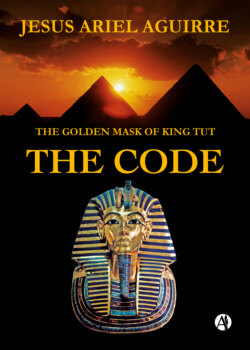Читать книгу The Golden Mask of King Tut The Code - Jesús Ariel Aguirre - Страница 21
На сайте Литреса книга снята с продажи.
Types of signs
ОглавлениеThere are three types of signs:
1 Phonograms.
2 Ideograms.
3 Determinants.
Some signs can only belong to one of these categories but others can function as two or even three of them.
It can be a phonetic sign: which in turn can be alphabetic or monolithic (they represent the 24 letters of the Egyptian pseudo-alphabet) or syllabic (which can be biliterate or triliterate). In addition to acting as phonetic signs, with the sound that corresponds to each one, they can also act as phonetic determinatives: one or more monoliths next to a bilítero or trilítero that repeat the same letters do it only to reinforce that idea, not with encouragement to repeat the same thing twice. H ay be considered that the hieroglyphic was artistic writing, so that these repetitions could letters used to fill a space in the pictorial composition.
Phonograms:
They are hieroglyphic signs that represent a sound or a series of sounds and not a meaning.
They are always consonants; there are no vowels, although there are weak consonants or semi-consonants.
They may be:
Unilíters : signs that represent a single consonant.
Bilíters : they are equivalent to two consonants and are the most abundant.
Trilíteros : which have a value of three letters.
Quadriliters : signs that represent a group of four consonants.
They are very rare.
It can be an ideographic sign or a pictogram: it is a sign that is inserted at the end of a word to clarify its meaning (if the word has several meanings) or that acts as a determinative to give information about what it is about (for example, a circle with a cross is the determinative of “place, city, region”, so the name that precedes it is the name of a place). A “simple” way to start reading hieroglyphs is to know these determinatives, which are the ones that separate words.
Ideograms:
These are signs that do not correspond to a sound but to a word.
When the ideogram represents the image of its own object it becomes a pictogram.
Many phonograms are converted to ideograms by placing a vertical stroke on them. The vertical line indicates that the sign is not phonetic but must be interpreted in its real meaning as a word.
Determinants or determinatives:
These are signs without phonetic value that are normally placed at the end of a word to indicate the semantic class to which it belongs. Thus the name of a person followed a
Determinative of man , woman , or child
that of a tree that of a tree ; after an abstract concept we can find the sign that determines it, or for water or actions connected with it. Thus, we have a long list of signs, some are the same that on other occasions function as phonograms, which in certain cases function as determinants of a term.
They may or may not appear, but if they appear it is important to locate them as they are neither transliterated nor translated.
Sometimes they are essential to determine the meaning of the word:
